Charting Daifuku’s Path Forward: CTO Takuya Gondoh Discusses Strategy, Innovation, and the Role of Technology
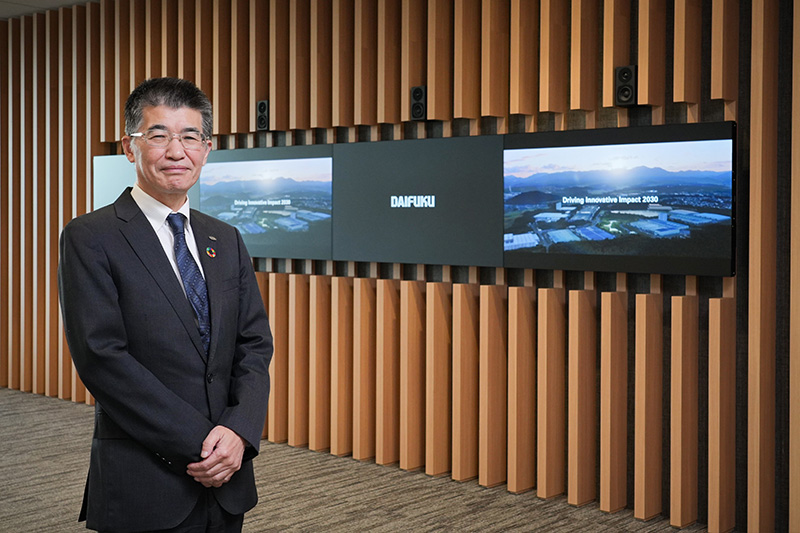
Artificial intelligence and other technological advancements are expanding the potential of material handling systems to solve challenges in logistics and manufacturing. To learn more about how Daifuku is leveraging cutting-edge technology to drive growth, we spoke with Takuya Gondoh, Chief Technology Officer (CTO) and head of the Business Innovation Division, regarding Daifuku’s efforts to create new value by developing and implementing cutting-edge technologies.
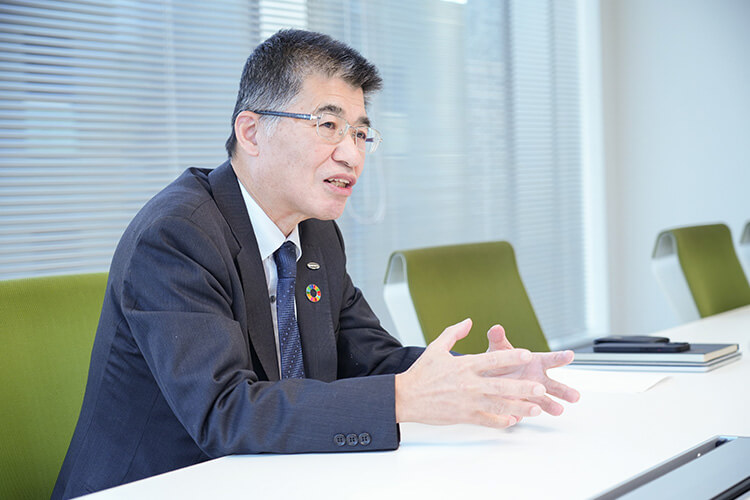
Tell us about your role as CTO and the direction you want to see Daifuku take.
“My role as CTO is to explore growth areas and social issues from a technological and R&D perspective, identify potential applications for our technology, develop R&D strategies, and invest in and develop foundations for innovation. By doing so, I will promote the development and introduction of advanced technologies and the creation of new business segments, thereby helping to realize Daifuku’s long-term vision; Driving Innovative Impact 2030.
Daifuku growth has come from our ability to listen to customer needs, develop R&D strategies within each business segment to address those needs, and then deliver solutions to customers. Over time, each of our businesses has accumulated a trove of specialized technology, knowledge, and skills.
For example, in manufacturing and distribution industries, we have developed AI-based image processing for picking robots and AI-led ordering for mixed-pallet loading, and in semiconductor production lines we have introduced AI that improves pathing efficiency in the overhead vehicles used to transport wafers. Meanwhile, at pharmacies, AI is being used to improve accuracy in prescription auditing systems created by our electronics business.
While each business unit possessing extensive expertise, they also regularly tackle the development of similar technologies. As the CTO, my role is to promote collaboration across businesses, making it possible to develop and introduce technologies at an even faster pace.”
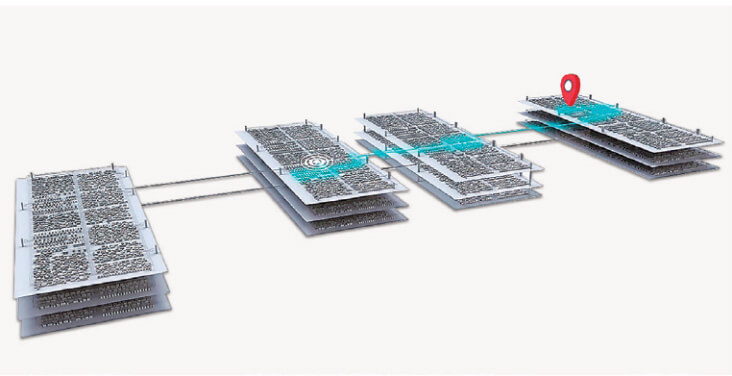
AI-driven transport route optimization in a semiconductor plant

The audit-i pharmaceutical prescription auditing system
What are some of the initiatives you are currently working on?
“One specific initiative, which began in 2023, is a company-wide project to identify and visualize long-term business challenges and then address them. To ensure discussions do not remain purely theoretical but are translated into concrete action, we selected a wide range of members with hands-on experience from assistant managers to division managers in our business segments and corporate, and we organized four subcommittees for the project.”
What can you tell us about the subcommittees’ activities?
The four subcommittees created for the project are: Strategic Planning, AI Development and Promotion, Human Resource and Process Management, and Shared Infrastructure. Strategic Planning identifies technologies that should be prioritized for future research and development based on projections for next 10 to 20 years. AI Development and Promotion selects and implements AI development themes that can be applied across our business segments. Human Resource and Process Management is tasked with revising the skill maps for technical employees. And, finally, the Shared Infrastructure subcommittee works on the creation of a data-sharing infrastructure that benefits all departments throughout the company. Each subcommittee has four to five members and usually meets twice a month. And I try to attend all of these meetings.
Promoting a Forward-Thinking Mindset
How are you focusing your efforts?
“We are focusing on increasing awareness in each and every employee. Our current approach to product and technology development in each business is customer-focused and relatively short-term, taking only a few years. Breakthrough innovation, however, takes a long-term approach with an eye to the future, so we must anticipate future business opportunities and develop technology to grab them.
With it being almost 2 years since the project began, our members have embraced that awareness, and are proactively sharing information and generating new insights and ideas. We hope to expand this trend to all company employees in the future. To accelerate this shift within the company, we are looking to craft some early successes, and we are building an AI-powered internal system that can be used throughout the entire company to achieve this.
The system will have three key functions. The first will be similar issue searching, a tool that increases failure response times by creating a database of past system failures and using AI to quickly find relevant ones. By transforming tacit knowledge into explicit knowledge, even younger, less-experienced staff will be able to restore systems as quickly as their veteran coworkers. The second function is digitalized inspections, in which we use sensors to digitize vibrations and other equipment operation data, and then analyze that data using AI to prevent failures and ensure stable operation. Finally, the system will have an AI chatbot for manuals, which—as the name suggests—will have our manuals in its database and respond to various inquiries from employees. Trials of some of these functions began being rolled out to our businesses in 2024.
By creating a cutting-edge system that works across our business segments, we can show to employees how important it is to think about future-oriented technologies and innovation.”
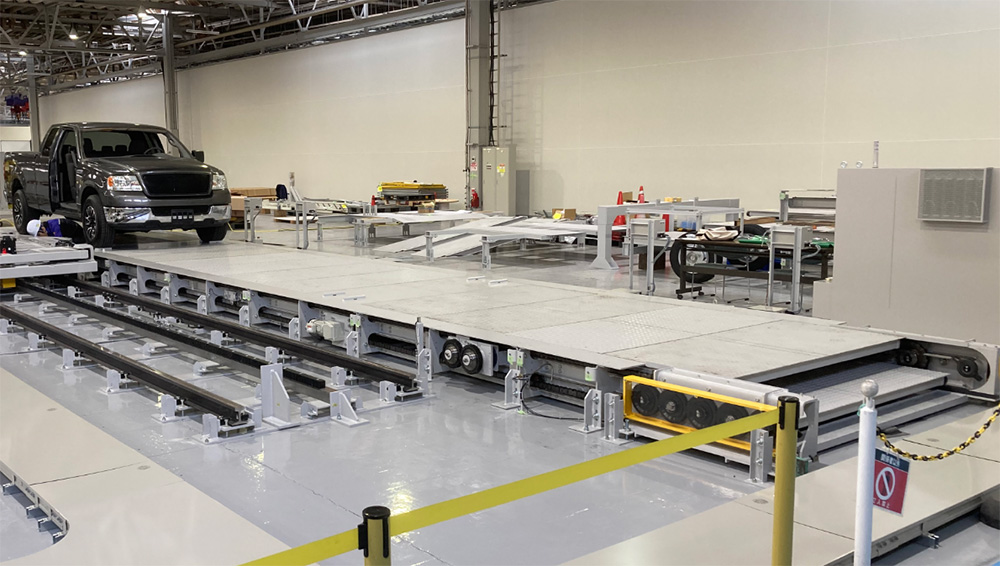
Developing Talent to Drive Change
How does talent recruitment and training work into your strategy?
“Even though digital transformation and AI utilization are vital for transforming business and internal operations, skilled professionals in these areas are in short supply. In addition to recruiting experts, we also must focus on developing our own personnel.
Our talent development initiatives include company-wide e-learning programs on DX and AI to improve literacy, as well as our D-Adapt data science training program—available at major locations across Japan—which teaches selected employees how to identify challenges, leverage data, and generate solutions. Our goal is to expand this program to all our offices globally to ensure that 10% of our workforce is trained in DX and AI. These human resource development initiatives are designed not only to build knowledge and skills but also to lower the psychological barrier to adopting advanced technology in our operations.
Lastly, what is your vision for the future of Daifuku and your future outlook as CTO?
Technology in general is inarguably crucial, but business success is equally important, and being technologically ahead is not enough. Even with a head start on technology that will be useful 10 to 20 years down the road, we have to think about how that technology can contribute to our business.
Doing that requires analytical thinking skills and the ability to identify problems, find solutions, and put those solutions into practice. At Daifuku, we are dedicated to fostering a culture where employees actively seek out problems and solutions to create new value. But we are not relying solely on in-house capabilities. We are also promoting open innovation through partnerships with startups and universities to further enhance Daifuku’s technical expertise and further drive our growth in the medium- to long-term.”
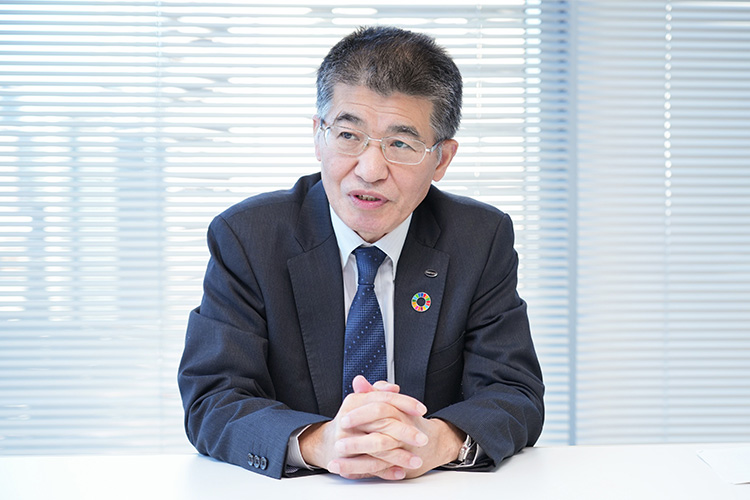
Takuya Gondoh
Senior Managing Officer
CTO (Chief Technology Officer)
Business Innovation Division Manager
